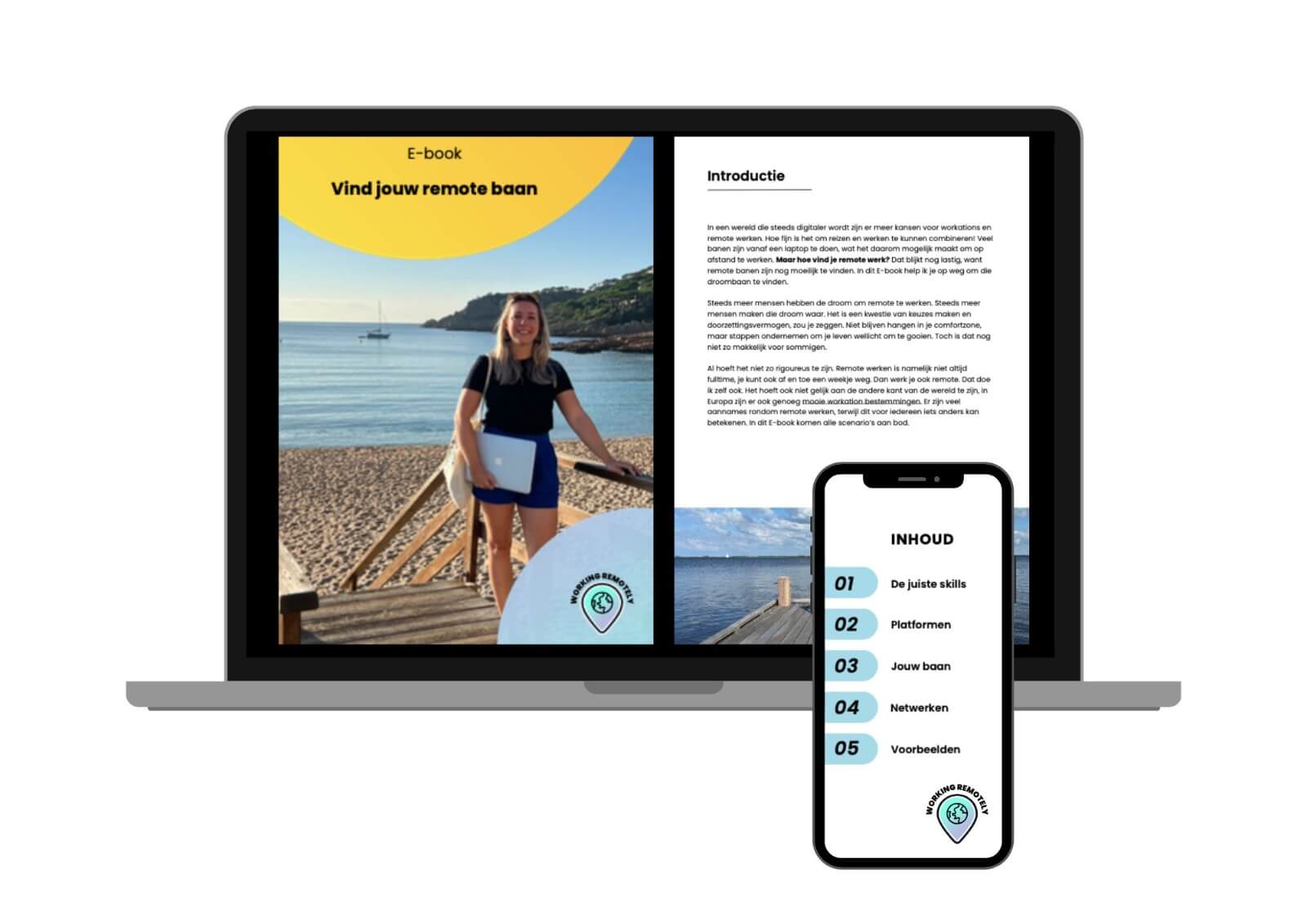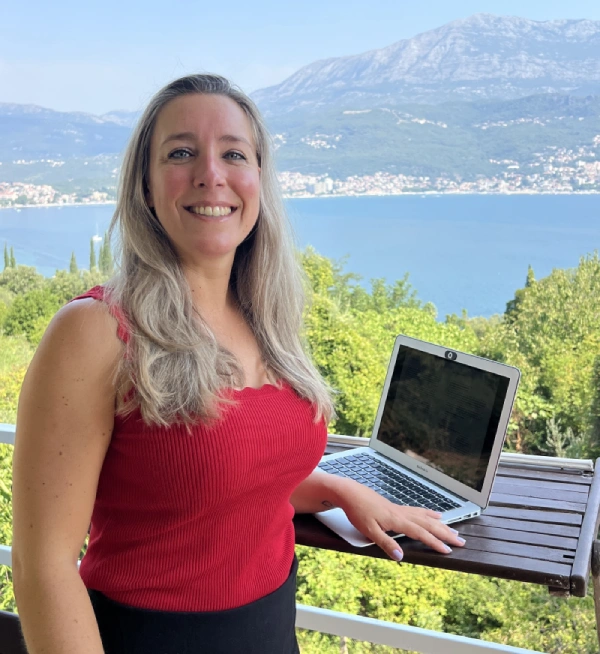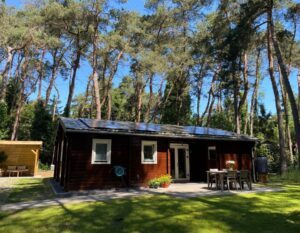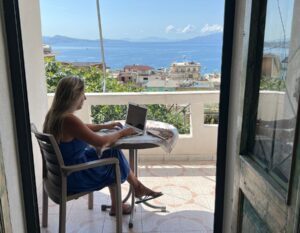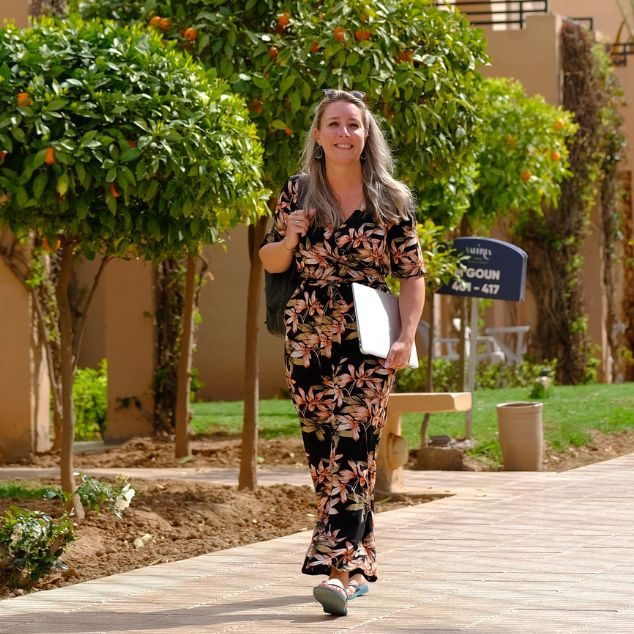When we sold our Renault Master motorhome a few years ago, we knew: this is not a farewell to travel, but rather the next step. We dreamed of more space, a child-friendly living environment and a mobile office. In September 2024, we became parents to Jippe, and now the three of us (and two dogs!) live in a self-built tiny house on wheels.
From camper to tiny house on wheels
Our first motorhome – a converted Renault Master – was a great start. But with a baby on the way and the desire to keep traveling and working full-time, we outgrew it. So three years ago we decided to buy a truck. We converted it into a tiny house ourselves, with everything included: kitchen, bathroom, wood-burning stove, box bed for baby Jippe and an office.
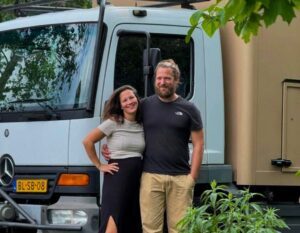
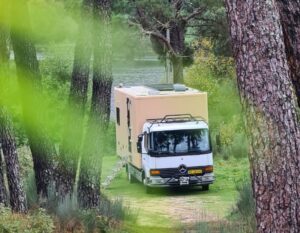
Now we live largely self-sufficiently. Solar panels provide electricity, we cook electric and have hot water, a bathroom with shower and toilet. And yes: we even have an airfryer, kettle and, in addition to a “regular heater,” a wood stove.
Our online work as digital nomads
Together we run Studio Walrus, our own company through which we create content for businesses, with a focus on animation videos, visual storytelling and e-learning. We work location-independently. As long as there is internet, we can get to work. We do meetings online and that works perfectly. Especially now that companies have become accustomed to digital collaboration.
The beauty of this life: we plan our own days. Don’t have deadlines? Then sometimes we take Monday morning off and enjoy a walk on the beach or a sumptuous lunch on the tailgate. Is it suddenly busier? Then we grab the laptop on Sunday afternoons. No coffee room talk, no distractions, we seriously move a lot of work.
This is how we built a remote e-learning business
Studio Walrus, our company through which we create animations, illustrations and e-learnings for companies, actually evolved quite organically. Joa worked as a videographer and filmed on location, but during our first trip (five months through Spain and Portugal) he discovered that editing, illustrating and animating gave him much more pleasure than filming. The great advantage of animation is that you can decide everything in advance: you don’t need a shooting day, no people in front of the camera, and no worries about light or weather conditions.
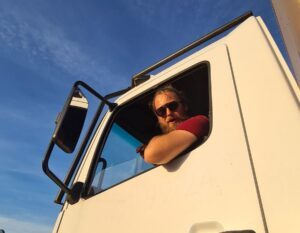
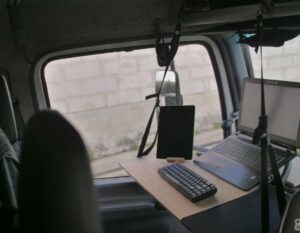
Joa does the visual work (illustrations, animation, video), Diede writes the scripts and does the client contact. This turned out to be a perfect match: Diede translates complex information into understandable voice-overs, and together we create visuals that really stick. We work with Adobe programs. Our laptops are powerful enough for heavy productions, and with Starlink we have reliable Internet everywhere.
We find new clients both in the Netherlands, through networking meetings when we are in the Netherlands in the summer, and online while traveling. We stay visible through social media like LinkedIn and Instagram, have online coffees with potential clients and maintain our network digitally.
A mobile workspace with great views
Our mobile workation is literally an office on wheels and allows us to work anywhere. We built an enclosed office in the front of the cab, with a panoramic view. Ideal for working undisturbed or holding a client meeting. And: our customers always know where to find us. Because that is a prerequisite if you work remotely. We are always visible online, active on social media, and accessible via email, WhatsApp or phone.
Freedom to work where you want
Our truck is basically a big backpack with everything we need. We drive from place to place through Europe, sometimes standing on asphalt, but more often on the beach. Then we flip open the tailgate and have a terrace overlooking the sea. Unaffordable for many people in a detached house and office by the sea, but this way we were able to realize it.
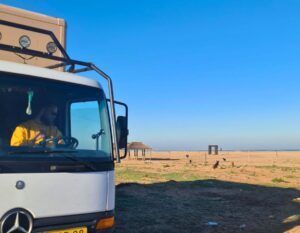
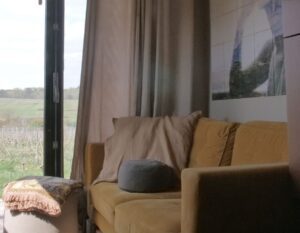
In the summer we are in the Netherlands. Then we like to plan appointments with clients, visit networking events and show our faces. In the winter we head south, where we do everything completely digitally. That combination works perfectly for us. Curious about our journey? We share regular updates via Instagram. Follow their vanlife adventure here: @joa.and.diede
More inspiring guest blogs about vanlife

